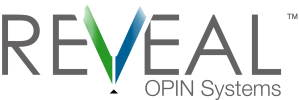I started dabbling with personal computers in the mid 80’s . I had worked with terminals on a mainframe, but the idea of having my own machine with storage was amazing to me. I started with an Atari 520ST…an amazing machine with really cool graphics. I loved that computer.
By the early 90’s, DOS-based PC’s were all the rage. I went to The Price Club and saw my dream machine – a Dell 386SX with 4MB of RAM and a 120MB hard drive. Wanting to make sure I was making a wise purchase, I called two friends and asked their opinion. They told me I’d never use all that hard drive space…in my lifetime!
Uh…they were wrong.
Back when 4 megabytes of RAM cost $400, businesses were extremely careful about what was saved and how they dealt with content. As the price of memory spiraled downward however, attitudes changed. Today, businesses are generally sloppy – keeping virtually everything with little or no organization. We now have gigabytes, terabytes and petabytes of content we can’t possibly hope to index and use.
Information governance, including lifecycle management, retention rules, version control, redaction and entitlement are processes all businesses should practice, but the enormity of the task often stops even the most determined administrators in their tracks. Ignoring these processes, however, not only costs money for storage and employee time spent searching for content, but also exposes companies to the legal risks associated with non-compliance to regulatory standards.
How do you create an information governance plan?
“How do you eat an elephant? One bite at a time.” You’ve heard it, now it’s time to practice it. As you prepare for your migration project, plan to govern information from the outset. Even if it means starting with your current content, planning now will save you money, time and frustration down the road. Here are some steps to consider:
- Why? What are the business objectives that will drive your information governance program, and how will you know you’ve succeeded? Document your answers to these questions for others as they question your sanity for trying to do this.
- Engage key stakeholders in developing a strategy. Try to make this a cross-functional team, so all teams have buy-in. This will be an incentive for each team to engage in governing your content.
- Simplify. The easiest way to ensure user adoption is by giving them some to use that is valuable and simple. Automate processes whenever possible, and where you can’t, create a path that is clear and simple.
- Write and communicate the policies you hope to enforce. The cross-functional team you created should put together a simple list of rules, and commit to creating a training program to ensure compliance. This is a vitally important step. Adding complexity to someone’s job for business purposes is fine. Asking them to do it in the dark, however, is a great way to ensure failure of your governance initiative.
- Follow-up with users and compliance experts to make sure the policies are effective and are being enforced. Remember, this is about adding business value, but you can’t do it without your users. Information governance is ultimately for people….close the information loop and make sure your solution is simple, reliable and effective.
Information governance is an important part of any content migration. It’s a huge project, but how do you eat the information governance elephant? One byte at a time! (Sorry…I couldn’t resist!)

